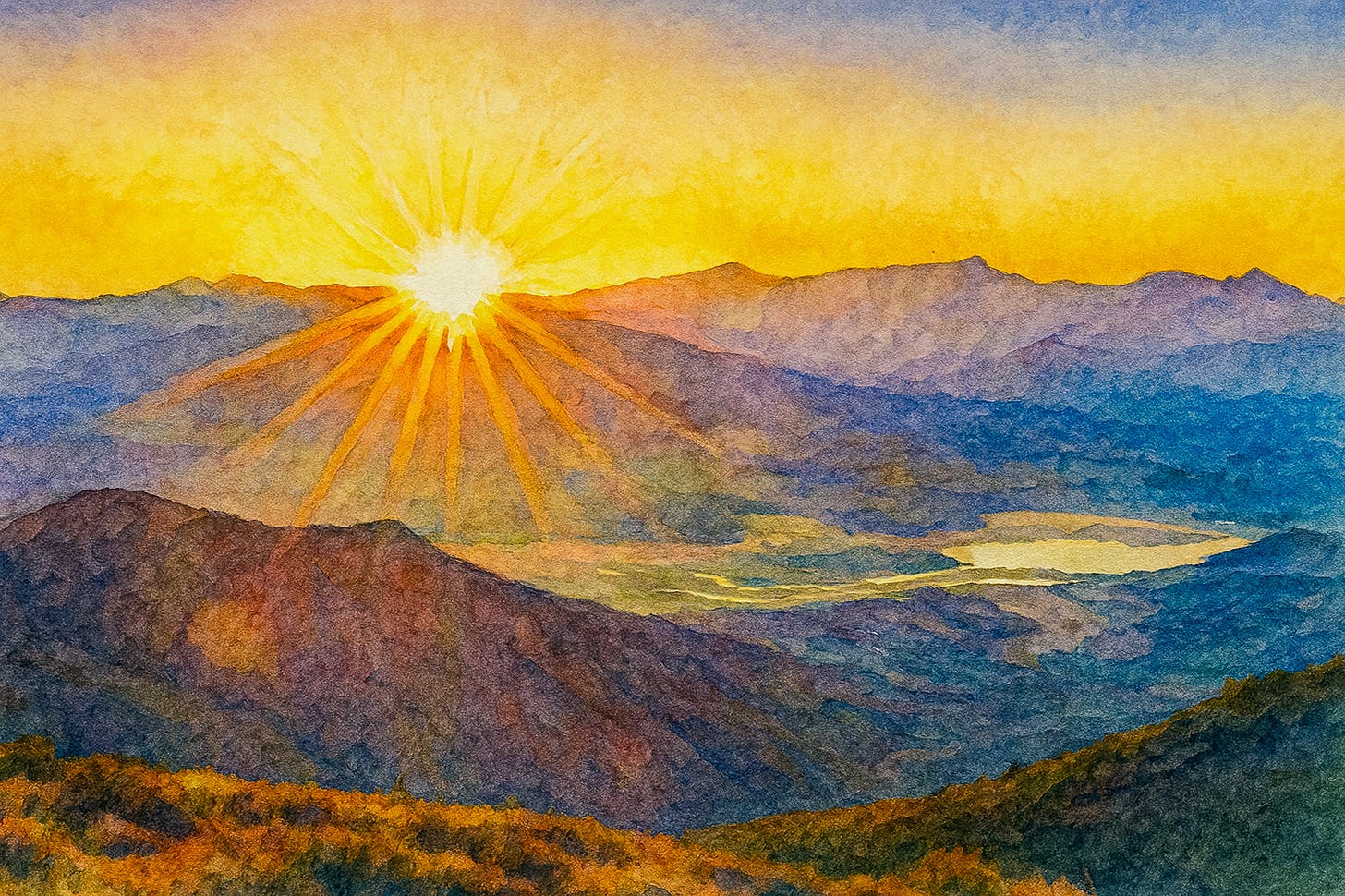Beyond Burnout: The Science of Peak Performance and Finding Flow
Three proven ways to enter flow state and unlock your best work
- Sunrise Over Horseshoe Lake, original image by author
You know that feeling when hours pass like minutes? When you're so absorbed in your work that everything else disappears? That’s what this article is about.
It’s flow, and it's not reserved for extreme athletes. It’s the kind of thing I experience when I write, capture photographs, paint, take long bicycle rides, and meditate. And by the end of this article, you’ll know how to pursue it if this science is new to you.
Steven Kotler's "The Rise of Superman: Decoding the Science of Ultimate Human Performance" reveals how base jumpers, big-wave surfers, and wingsuit flyers achieve superhuman performance through a state of flow. But here's what matters for the rest of us: the same neurological mechanics that help a surfer ride a fifty-foot wave can transform how you work, lead, and live.
The science is clear. Flow is trainable. You don't need to risk life and limb. You just need to understand how it works.
1. Risk Awakens Peak Performance
High-stakes athletes enter a state of flow because risk silences the inner critic. When survival is on the line, your brain recruits every resource for peak performance. Neurochemicals flood your system, opening the door to abilities you didn't know you had.
Your version of risk doesn't require a cliff. Instead, meaningful risk in professional life might mean finally starting that business you've been planning for years, knowing that failure could impact your financial security, but growth demands the leap. It could mean having the difficult conversation with your team about performance issues, risking temporary conflict for long-term improvement.
Perhaps it's publishing your ideas before they feel perfectly polished, accepting vulnerability in exchange for an authentic connection with your audience. Or it might involve taking on a project that stretches your abilities beyond your current skill level, embracing the discomfort of learning in real-time while others watch.
Flow follows focus, and focus sharpens when something meaningful is at stake. Every wisdom tradition echoes this truth: growth demands stepping beyond one's comfort zone.
2. Flow Requires Complete Focus
We worship multitasking, but superhuman performance comes from singular attention. Flow requires complete immersion—and even small distractions can knock you out for over twenty minutes.
Create conditions for flow in everyday work by designing your environment and habits around a singular focus. Turn off all notifications during deep work sessions, recognizing that even a brief ping from an email or message can derail your concentration for over twenty minutes.
Block out substantial two-hour windows for your most important creative work, treating these periods as non-negotiable appointments with your highest potential. When entering conversations with colleagues or clients, resist the magnetic pull of your phone and give your complete attention to the person in front of you, understanding that presence is both a gift to others and a pathway to your own flow state.
Choose one priority each day and pursue it with the kind of relentless focus that transforms ordinary effort into extraordinary results. When you align your environment with your intention, flow finds you.
Work stops feeling like drudgery and starts feeling like an art form.
3. Transcendence Lives Within You
The most powerful insight from Kotler's research: flow is built into your nervous system. You don't need mountaintops or monasteries to access transcendent states.
You already touch flow when you lose yourself completely in creative work, becoming so absorbed in writing, designing, or problem-solving that hours pass unnoticed and self-consciousness disappears entirely. You find it when tackling complex problems that demand every ounce of your mental resources, where the challenge perfectly matches your skill level and pushes you to the edge of your capabilities.
It emerges during moments of deep engagement with others, whether leading a team through a crisis, mentoring someone through a breakthrough, or collaborating on something that matters more than individual ego. You discover it when pursuing meaningful challenges that connect to your deeper purpose, work that feels less like an obligation and more like a calling.
Flow isn't exotic—it's your birthright. The same state that mystics have sought for centuries is available in your daily work.
Making It Practical
Start by noticing where you already experience a state of flow. Then nurture those conditions: challenge balanced with skill, focus without distraction, meaningful risk rather than safety.
Flow isn't a luxury for high performers. It's a necessity for anyone who wants work that matters. I’ve cultivated my flow state over the course of decades, having discovered it as a competitive athlete.
And no, having ADHD and other supposed “disorders” doesn’t preclude you from finding your flow state. Trust me. If I can flow, so can you.
What matters more than anything else is believing in yourself and going for it. The rise of superhuman isn't about becoming someone else. It's about uncovering what's already within you.
I'm an author, mentor, and facilitator. Ask me how The Clarity S.H.I.F.T. Method™ empowers leaders and professionals to enhance communication, prevent conflicts, foster trust, and achieve alignment. Learn more at www.CliffordJones.com.



